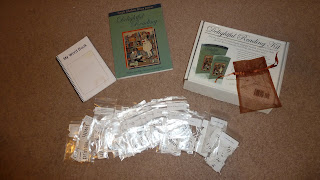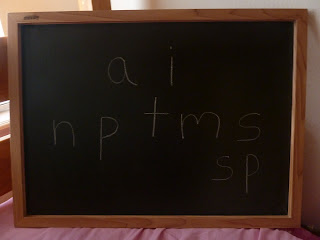 |
| Doing The Thinker |
I love the generous curriculum idea put forth by Charlotte Mason. Many subjects which widen their horizons are being covered by my children. It can be an overwhelming educational principle, however, when you're teaching multiple grades or trying to meticulously cover every subject.
Elizabeth (grade 5) does up to 20 subjects a day. Jonathan (2nd) can do up to 14 a day, and Phoebe (K) does 7-10. Some of these are family do-togethers, and Elizabeth and Jonathan do some on their own also. While we are normally able to finish our work before kids get out of public school, I often feel doubtful that we're covering each subject well enough. How can you cover so many areas and remember it all?
While reading Volume 3 of Charlotte Mason's series, I found some comfort to salve this worry. (Check out pages 162-163 if you want to read it yourself.) Charlotte was talking about the need for a wide curriculum and how we shouldn't limit a child's access to certain subjects intending a predetermined pathway for him. For instance, we think he should not waste time on Latin since it won't be of use to him in the commercial pursuits we imagine for him. From there though we read how only "a few notions" will catch hold of a child; but when they do catch hold, they can work more wonders than years of grind. There's no need to limit the variety of knowledge relationships your child can pursue. And it is not expected that every bit of information or fragment of experience will light your child's mind on fire with connection and light-bulbyness. *Whew* It does take a load off.
Teachers offer access to the wide range of knowledge and experiences and then step back allowing the child to connect to the material. The teacher does not need to fret if the child does not make the connections she would make. She needs not fret if all 20 subjects from the day do not set the child off in a delightful narration. There was likely at least one solid connection established that day. One notion that made the child pause and reflect for a moment before continuing his reading or translating Latin. We serve up the best that we can, trust good habits, keep a wise eye, and set them off to pursue a life of learning.
At the end of Volume 3 similar words of comfort are written:
The average child studies with 'delight.' We do not say he will remember all he knows, but, to use a phrase of Jane Austens, he will have had his imagination warmed in many regions of knowledge.






































